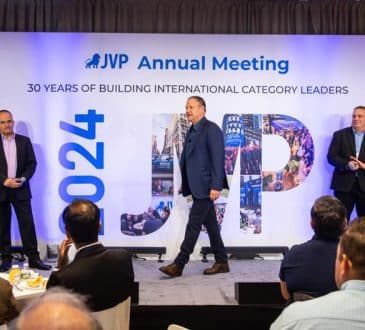Improving morale and productivity through hybrid working: Remove hierarchy, encourage autonomy and create a place to belong

The pandemic has well and truly altered the way we work forever. As the world adjusts to a new form of hybrid working, leaders are now faced with new challenges: finding effective ways of encouraging accountable, autonomous teams, while creating both physical and virtual environments that help make staff feel like they belong in a socially-distanced world of work.
One of the biggest struggles for leaders is motivating their staff throughout transitional periods of change – as lockdowns lift and return around the globe, managers have a greater responsibility towards their teams than ever before.
Recent research points to plenty of evidence that proves a large percentage of staff around the world simply don’t want to return to the workplace. When Apple told staff they’d be required to return for three days per week for example, they received harsh pushback, with many employees demanding if the return-to-work policy was implemented, they would quit.
Staff simply no longer want to be confined to clinical cubicles – while others don’t want to continue blurring the lines between work and home. But leaders shouldn’t see the pandemic as a curse – we should view it as a unique opportunity to rethink the way that staff are motivated, supported and trained.
To overcome these challenges, there are a lot of ways that leaders can enable their staff to thrive through hybrid working. By instilling greater trust, encompassing positive accountability mechanisms and enabling staff to make their own decisions about when they’d like to come to work.
Has the pandemic ended the days of micromanagement?
New hybrid working models mean staff can no longer be micromanaged like before – so leaders must adapt to new ways of building greater trust in staff.
Micromanagement has already been proven to be a counterproductive way of managing staff. A part of making hybrid working work is by giving your staff more agency and autonomy.
In 1982, Paul Hersey and Ken Blanchard published research on situational leadership that stated when staff are first beginning in their roles, they require much more mentoring and instruction. But once they become more experienced and are given the tools to work autonomously, it’s time to get out of the way.
Autonomous working doesn’t mean you don’t regularly check in with your staff – it’s about the way you train your staff to ensure you can instil a high level of trust, with a workforce of staff who are motivated to towards hard work and innovation and are keen and willing to participate in a strong team producing great quality work with an aligned purpose and goal.
Micromanagement is a fear-based behaviour that can reduce staff motivation and retention. A manager’s job is not to hang around telling people what to do – strong leaders will create a pathway for their teams to become as independent in their workflows as fast as they can.
But autonomy needs to be balanced with accountability – if staff want to be left alone, they need to demonstrate maturity and willingness to reach deadlines and goals. And staff will not always be able to lead the direction, so it’s important for managers to help them navigate.
Directions and goals need to be clearly defined – in an online space, this can be more difficult. But it is possible when managers can encourage a culture of updates and work-sharing. For example, daily or weekly huddles can be taken both online and in physical form, and encourage teams to share updates, goals and visions.
Weekly demos can enable staff to showcase progress to managers, stakeholders, clients and fellow staff, and posting conversational messages and updates using tools like Slack help staff learn from one another.
To keep staff motivated and accountable to KPIs, managers need to be transparent and make sure work is easy to understand in an easily accessible way. Short-planning cycles, either weekly or fortnightly, enable teams to regularly check in with progress and continue to see growth.
Visualization, via mind-maps, using canvases or white boards and writing or drawing during meetings helps everyone better understand the process, rather than just talking about it.
Encouraging both team and individual autonomy
Trust-based autonomy has become even more important during the pandemic. A strong autonomous working culture is created when managers can coach their staff to take initiative and grow as both individuals and within teams.
Team-based autonomy involves building teams of staff who can be delegated and take control over certain tasks, making their own decisions about how the work is executed.
With strong individual autonomous culture, individuals in the team will be motivated to venture forth with what they can contribute to projects.
When the preconditions for this culture are met from the beginning, this process is a lot easier. It will be the default standard that people operate to when the culture is in place when people apply to work.
It is important to think about what you already have in place to enable that culture to grow. It is created by investing the right knowledge and time, and making space by taking away unnecessary bureaucracy or meetings.
Managers must be taught to be good managers – and instead of just giving a high performing worker extra work, they should be given the knowledge, practices and information to be able to succeed.
Many workplaces burden their managers with too much work, with a mindset of, “show me you’re busy.” Instead, they should be given the space to listen and make sense of situations while being able to pay attention so they can intervene and help in those high impact moments.
Keeping accountability
So how do you ensure staff can be kept accountable without needing to micromanage? It starts with an attitude of believing in your staff. You don’t trust people by checking in on them – you trust them trusting in themselves.
But leaders need to also verify – when they’re working for the first time, they need to have the right skills and attitude. Once they’ve established themselves and have the right knowledge and skills, your job is to get out of the way, while providing them with what they need to be successful.
As managers and leaders, we have an obligation to look out for our teams this way. When staff have more agency over their own work, motivation will increase. Instilling more trust in staff will also help staff work towards a shared purpose, who care about the same collective outcome.
Creating a workplace where people feel like they belong
The hybrid way of working has been warmly welcomed by millions of people around the world. But being able to work flexibly from home has left many feeling less motivated to come back. Staff also miss out on collaborating face-to-face with colleagues or having the time and space to socialise and network with team mates.
Some feel that working from home can have a negative impact on mental health, as the lines between work life and homelife become increasingly blurred. To counteract this, leaders can create a workplace that is more welcoming to work in. An effective way of doing this is by converting the office into a co-working space. Co-working environments are designed to help workers genuinely enjoy coming into work.
Leaders can quite easily convert the office into a co-working environment through a few simple techniques, and staff will be more motivated to come back. Office changes like creating spaces for socialising or solitude, like quiet meditation rooms, table tennis tables or a BBQ area for example, allow staff to unwind with colleagues so they can build rapport and encourage networking. When staff are confined by cubicles, they easily forget they are working with like-minded people working towards the same purpose and goals.
Creating spaces for both hot desking and permanent desking can also help staff find more motivation and creative flow, having the flexibility to move around or choose to have a more structured set-up.
Establishing café or lunch areas provide staff with a place to have non-transactional conversations, and catch-up over a coffee or tea. In a virtual environment, this would look like creating the space for activities including hackathons, webinars, or karaoke and Pictionary.
In a recent survey asking staff about how they felt establishing the office as a co-working space had impacted mental health, 96% of respondents stated that it has greatly improved. Leaders are responsible for ensuring their staff can work at their peak performance, and be happy and motivated at work. There has never been a more vital time in modern history to implement positive workplaces where people truly want to be there.
We have an opportunity today to reframe the workplace, to reframe how we build trust in our staff, and consider how we can make our staff feel like they belong.
By providing the right tools and structures, as well as spaces for innovative and enjoyable collaboration and communication, hybrid working does not have to be a hindrance – it can help teams and businesses thrive.
Written by Craig Brown.
Add CEOWORLD magazine to your Google News feed.
Follow CEOWORLD magazine headlines on: Google News, LinkedIn, Twitter, and Facebook.
This report/news/ranking/statistics has been prepared only for general guidance on matters of interest and does not constitute professional advice. You should not act upon the information contained in this publication without obtaining specific professional advice. No representation or warranty (express or implied) is given as to the accuracy or completeness of the information contained in this publication, and, to the extent permitted by law, CEOWORLD magazine does not accept or assume any liability, responsibility or duty of care for any consequences of you or anyone else acting, or refraining to act, in reliance on the information contained in this publication or for any decision based on it.
Copyright 2024 The CEOWORLD magazine. All rights reserved. This material (and any extract from it) must not be copied, redistributed or placed on any website, without CEOWORLD magazine' prior written consent. For media queries, please contact: info@ceoworld.biz
SUBSCRIBE NEWSLETTER









